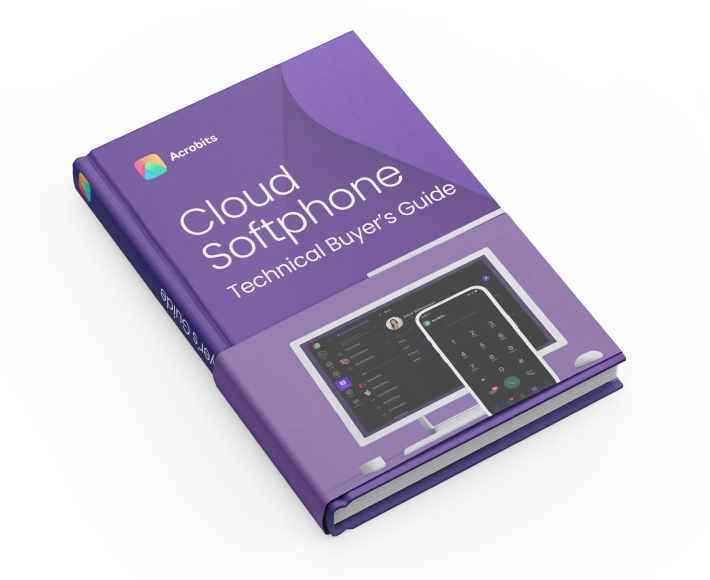
Session Initiation Protocol (SIP) is a robust protocol that enables businesses to run phone systems over the Internet. The rapid adoption of SIP has allowed for organizations of all sizes to establish more dependable and scalable communication systems.
Analysts expect the global SIP trunking services market to reach US$43.74 billion by 2031, a substantial increase from $11.96 billion in 2021. This projection is based on the global adoption of SIP-based communications due to its advantages over traditional telephony systems.
However, while integrating Internet connectivity into the core infrastructure of your communications services provides plenty of benefits, it also creates new vulnerabilities that must be mitigated.
Read on to learn more about why robust SIP security is required and strategies you can implement to bolster your telecommunications security posture.
SIP allows enterprises and small businesses alike to create more scalable communication infrastructure by digitizing PBX systems, providing enhanced reliability and more manageable growth.
Yet, SIP-based services must also be adequately secured against cyber attacks and abuse. As powerful as the protocol is, it’s not ready to guard against all potential threats by default.
As a result, SIP trunking services must be appropriately secured to prevent malicious users from carrying out a variety of cyber attacks, whether you’re building an in-house solution or purchasing a softphone for your business.
SIP security is vital to prevent data breaches or infrastructure abuse by malicious actors. So let’s discuss essential best practices to mitigate potential threats and protect your communication infrastructure.

A crucial element of any cybersecurity strategy is having a solid understanding of network traffic. SIP security is no exception; it’s vital to have appropriate network monitoring tools in place that automatically identify unusual traffic and alert administrators immediately.
The sooner you know about a potential attack, the better you can stop the attack before it does any damage or mitigate its impacts. In addition, an effective monitoring system allows admins to have a complete overview of the network to pinpoint problem areas before they become significant issues.
Explore monitoring options that focus on SIP security. Additionally, if you already use a monitoring system for overall network traffic, ask your vendor if they have specific services to focus on SIP and VoIP traffic.
An SBC manages how phone calls are initiated, carried out, and terminated throughout any VoIP system. SBCs manage the traffic between the user and the carrier service, ensuring call quality and security.
SBCs can also act as a firewall when properly configured, allowing them to identify any potential threats and ensure that only authorized users are allowed to make and receive calls.
Traditional SBCs were physical hardware deployed at the edge of a company’s network. Now, SBCs can be virtualized and integrated anywhere in the business or carrier’s network to manage calls and enhance security.
You’ll need SBCs in any SIP-based communication infrastructure, so take the extra time to configure firewall-style permissions to mitigate or eliminate misuse or attacks.

Login credentials for your SIP client are your first line of defense against cyber attacks, yet social engineering, phishing, or brute force attacks can put user credentials at risk.
How can you guard against these credential-based attacks for your SIP systems? First, you need to require strong passwords that are harder to brute force. From there, they require users to change their passwords frequently, either monthly or quarterly.
Yet, strong and frequently changed passwords only go so far when considering social engineering and phishing. That’s why your SIP client’s authentication should also integrate multi-factor authentication (MFA) or contextual authentication to prevent unauthorized users from accessing your communication infrastructure, even if they have the right credentials.
Ideally, if you’re purchasing a SIP softphone solution from a vendor, they’ll already have these options that allow your teams to set password policies and decide when to force MFA. Evaluate these options when finding the right vendor for your company.
New vulnerabilities for the systems your communications rely on are frequently discovered, so updates often include security updates to keep you protected. In addition, services from vendors and in-house solutions both need frequent updates to keep your network safe.
If you’re building an in-house solution, your teams must ensure all the individual components are frequently updated. Physical devices need firmware updates, while virtualized devices, like SBCs, will need regular software updates. Make sure admins and developers stay on top of any available patches or updates to keep each component secure.
Regardless of the softphone you choose for your business, it can only do so much if your employees are not updating the app. Updates aren’t only for new features but also often contain behind-the-scenes security updates to patch known vulnerabilities.

What will you do if your SIP services face a successful attack? First, you need a variety of incident response plans to make sure your teams know how to react at the moment to stop the attack and mitigate its damage.
Incident response plans are necessary for cybersecurity overall. In the context of telecommunications, your teams need to know how to ensure communications while addressing the attack. How these goals are accomplished will look different based on the scenario, so creating a range of response plans is necessary.
Creating these plans involves starting with a given scenario, such as a DDoS attack targeting your communications infrastructure and detailing how teams should react. Plans should be concise, sequential, and allow your teams to react quickly even while facing an urgent attack.
Develop incident response plans now so your admins and security teams are ready for any scenario they may face.
Don’t make SIP security an afterthought; you should keep security at the forefront when developing your own SIP solution or buying a SIP client from a vendor. Understanding the potential threats facing your systems and minimizing or eliminating the possibility of them enabling a cyber attack is crucial.
Most of the above best practices will be the responsibility of your SIP client provider if you decide to sidestep in-house development and management. It then becomes your responsibility to thoroughly evaluate any potential vendor’s security posture before signing up.
Acrobits is a leader in security-first SIP applications ready to meet modern businesses’ needs right out of the box. After a quick setup process, you’ll be ready to move your teams to secure, cloud-based communications.
Is it time for your business to upgrade to secure, future-ready cloud communications? Download Groundwire or Acrobits Softphone today, or contact us for a demo to see how we can help.

Telecommunications is the lifeblood of any business and the way we communicate and collaborate has radically transformed over the past decade. Now, leveraging cost-effective technologies can help businesses scale while also unlocking all the capabilities they need. SIP is an underlying technology behind Internet-based communications. However, when navigating the world of Internet-based telecoms, the variety […]

What Is SIP Trunking? Session Initiation Protocol (SIP). It’s the protocol that allows users to send unified communications over the Internet. SIP trunking is a specific service that leverages SIP technology to connect traditional PBX (Private Branch Exchange) telephony networks to VoIP services. “Trunking” refers to the aggregation of multiple voice or data connections into […]

AI isn’t knocking on telecom’s door—it’s already moved in, set up shop, and started optimizing everything from call routing to customer sentiment analysis. And there’s good news: it’s not here to replace humans (yet). Instead, it’s helping telecom companies make sense of the chaos. Telecom has always been complex. Messy call flows, jittery audio, fraud […]

SIP has skyrocketed in growth alongside the need for dependable and scalable telecommunications. As a result, enterprises and individuals alike are using VoIP and SIP services daily, allowing for higher-quality voice calls and robust capabilities to meet the needs of the modern world. Over the past decade, we’ve seen Session Initiation Protocol (SIP) clients go […]